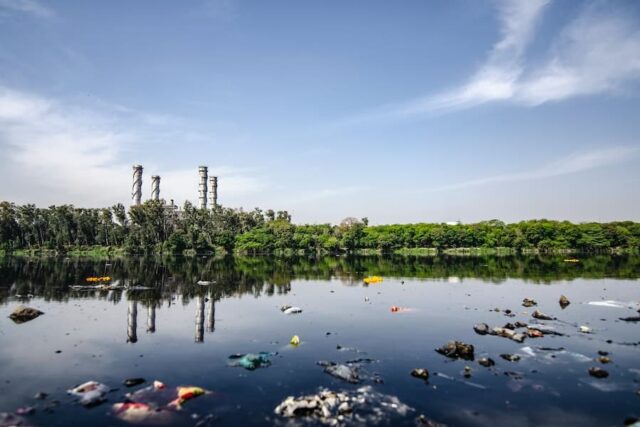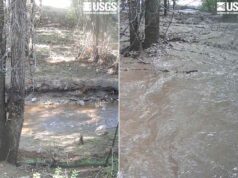Water, the lifeblood of our planet, can become a dark and insidious force when contaminated. The Camp Lejeune water contamination case is a reminder of the lasting impact of water pollution on individuals and communities.
According to TIME Magazine, nearly 1 million individuals were exposed to contaminated water at this North Carolina military base from 1953 to 1987. This included the families of military personnel stationed at the base. It’s clear that Camp Lejeune is not an isolated incident but a microcosm of a global issue.
In this post, we’ll navigate the Camp Lejeune case’s complex terrain, shedding light on the hidden risks of water pollution. We will discuss the legal battles for compensation and accountability and the global implications for water management.
The Unseen Peril
Beneath the serene surface of Camp Lejeune’s water supply lay an unseen peril that would haunt its residents for decades. Toxic chemicals such as Trichloroethylene (TCE) and Benzene silently infiltrated the groundwater, seeping into wells and treatment plants.
This contamination went undetected for years, an insidious threat lurking within the seemingly clear water. It reminds us that water pollution isn’t always immediately visible, and its consequences can harm human health long after exposure.
Health Consequences
The Camp Lejeune water contamination case has left a trail of suffering in its wake. Studies have linked the exposure to a spectrum of ailments, including various forms of cancer, neurological disorders, and reproductive issues.
These health effects highlight the gravity of water pollution as individuals exposed to contaminated water grapple with severe, long-term consequences. This case underscores the critical importance of safeguarding water sources and ensuring their purity.
Legal Battles and Compensation
The Camp Lejeune Justice Act of 2022 has played a key role in enabling legal recourse for the victims. It has opened the door to legal battles seeking compensation for the physical, emotional, and financial burdens endured by victims.
The Marine Corps Association states that VA benefits do not hinder veterans from filing claims under the CLJA. This emphasizes that VA disability benefits and CLJA settlements are compatible with each other.
The legal proceedings underscore the significance of holding responsible parties accountable for environmental disasters. These legal battles address individual grievances while shedding light on the broader issue of water pollution.
Vulnerable Populations
Among the most heart-wrenching aspects of the Camp Lejeune case is the heightened vulnerability of pregnant women and children. Exposure to contaminated water during critical developmental stages increased the risks they faced.
Pregnant women experienced miscarriages and gave birth to babies with birth defects, while children endured long-term health challenges. This aspect of the case underscores the disproportionate impact of water pollution on vulnerable demographics.
The Camp Lejeune Litigation
The Camp Lejeune toxic water lawsuit represents a monumental legal battle fought on behalf of the victims of water contamination. Thousands of pending cases highlight the gravity of the situation.
According to TorHoerman Law, these lawsuits seek compensation for the suffering endured by those affected. At the same time, they are shedding light on the broader issue of water pollution. Each case is a testament to the determination of survivors and their families, who are seeking recognition, closure, and accountability.
JD Supra recently reported that a new system for speeding up Camp Lejeune claims has been announced by the DOJ. Known as the Elective Option, it is the first of the Camp Lejeune litigation’s settlement possibilities. It is expected to provide some insight into what the government considers a suitable settlement offer.
The Role of Regulation
Camp Lejeune’s history raises critical questions about regulatory oversight and the imperative of stringent water quality standards. The contamination persisted for decades, largely due to a lack of comprehensive monitoring and regulation.
This underscores the need for robust and proactive regulatory frameworks to prevent similar waterborne health crises in the future. The case serves as a rallying cry for improved governance and oversight of our precious water resources. It also emphasizes the importance of stringent standards to protect human health and the environment.
A Global Concern
While the Camp Lejeune case is a microcosm of a larger problem, it resonates with global concerns about water pollution. The contamination and its consequences are not unique to this military base but reflect broader issues affecting communities worldwide.
It underscores the urgent need for international cooperation and commitment to safeguarding water quality. It demands collective action to protect the health and well-being of current and future generations. It is a call to arms for all nations to prioritize water quality and safety as a shared responsibility.
Final Thoughts
The Camp Lejeune water contamination case illustrates the enduring repercussions of water pollution. It unveils the insidious nature of this issue, with hidden risks, severe health consequences, and legal battles for accountability.
This case also underscores the disproportionate impact on vulnerable populations, emphasizing the need for protective regulations and stringent standards. Moreover, it is a global concern, echoing the imperative for international collaboration in preserving water quality.
Ultimately, Camp Lejeune reminds us that access to clean water is a fundamental human right that demands unwavering attention.













